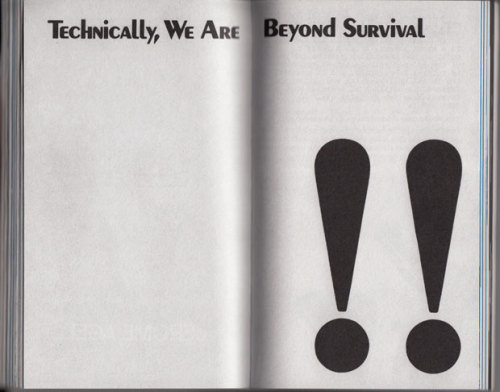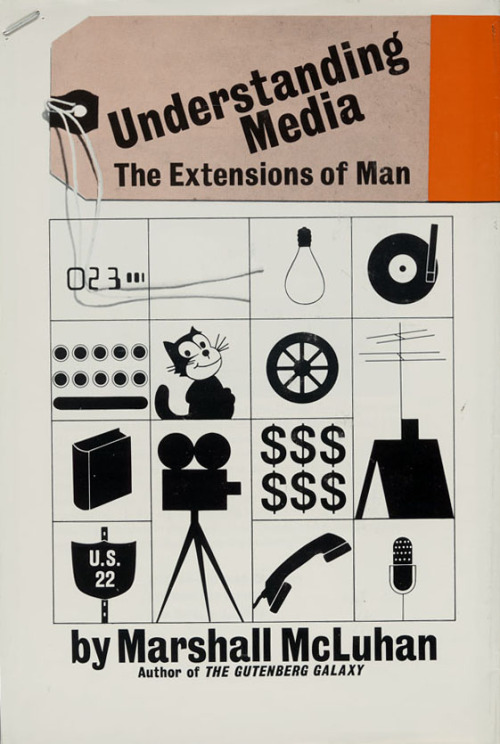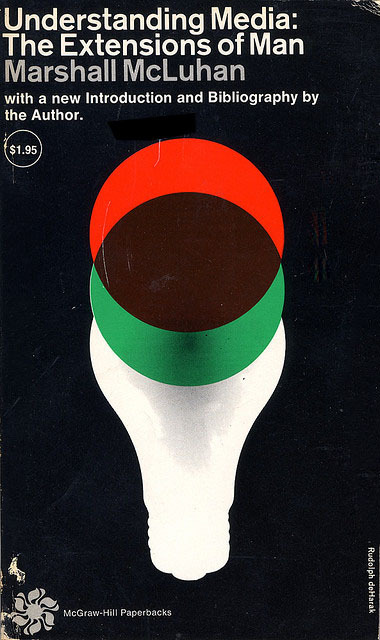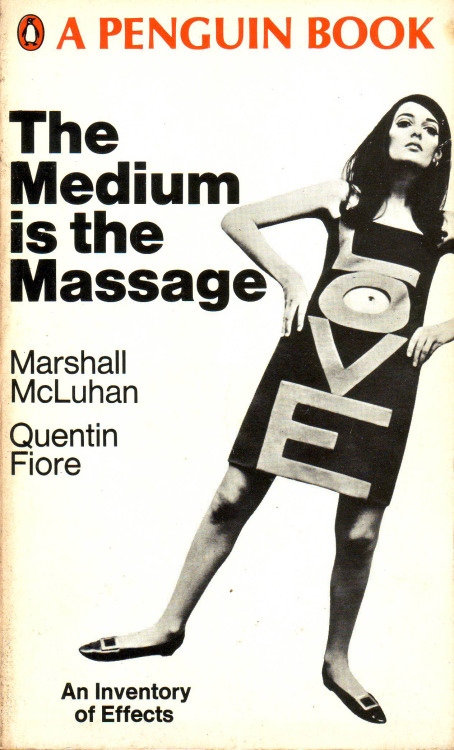#marshall mcluhan
“El medio es el mensaje” significa que los medios ejercen la mayor in- fluencia sobre nosotros, individual y colectivamente. Afectan nuestra manera de percibir, trasladándonos de una percepción equilibrada orientada a la palabra hablada y el espacio acústico, a un espacio de visualización reforzado y caracterizado por un punto de vista fijo, interpuesto por la alfabetización y la imprenta, y nos vuelve a sacar de esa modalidad con el advenimiento de los medios electrónicos. Afectan nuestra manera de pensar, desde la mentalidad concreta y global, característica de los miembros de las culturas orales, hasta el pensamiento abstracto, analítico y lineal que fue posible gracias a la alfabetización, y a nuevas formas de pensamiento ecológico en la era de la electricidad.
Afectan la manera en que nos vemos, desde las personas centradas en las tradiciones y las comunidades de las culturas orales, a aquellos de las culturas alfabetizadas centrados en el individualismo y en ellos mismos, a los cibernautas actuales, polifacéticos, mezclados y orien- tados hacia los demás.

La tecnología, extensión y amputación del ser humano
El medio y el mensaje de McLuhan.
The Medium is the Message.
Los medios, en un sentido amplio, son extensiones del ser humano, y también amputaciones, ya que la tecnología funciona, en la práctica, como prótesis.
El medio y el mensaje se suelen considerar dos ele- mentos muy diferentes del proceso de comunicación y, en cierto sentido, antónimos.
“El medio es el mensaje” sirve como invitación a la reflexión y, como fórmula poética, fomenta la participación dada su ambigüedad y apertura, y funciona como un medio frío, utilizando la taxonomía de los medios propia de McLuhan.
Post link
Does Social Media Ruin Relationships?
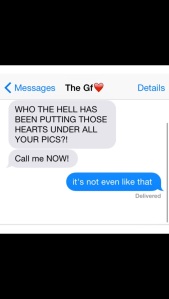
For those who don’t know me I LOVE social media. I had a myspace page back in the early 2000’s and was so reluctant to join a new social media site called “Facebook” back in 2005 because I was pretty sure Myspace was better. I recently celebrated my 6-year Twitter anniversary; I happily left the land of blackberry to get an iPhone and use Instagram- and I had a hi5, and friendspring account way…
After a series of condescending, unhelpful and disrespectful emails exchanged with a gallery curator, I have been reassessing my view of art. The result is, that this view is valid.
I believe the following: Art has a purpose, which is often tuned to fit the market’s demands, needs and interests. Society then, is the market for art - and all artists market their art to it (whether consciously intentional or not). This has been going on for centuries - the idea of patronage. It began with the rich as a status symbol (the church, the aristocrats and royalty, the nobility) and it continues today in many areas which have art galleries or collections when - by all standards - they are superfluous (corporations, law firms and universities which do not teach Fine Art). This falls into Erving Goffman’s idea of the spectacle and goes right along with McLuhan’s ideas on consumerism. These are institutions which root their social dominance and cultural/political legitimacy in the ideas of power of the past - art accompanies and is essential to this idea of power.
Art is and always has been a symbol of status as it is the oldest PR trick in the book - it emulates stories through symbolism and increases marketshare. This is a fundamental element that many art scholars and gallery curators now refuse to admit - reason being, it threatens the “meaning” of their roles - and their validity in society a.k.a. their marketshare. It’s all about hierarchy (conforming to the ideas of the academy or gallery standards) or your refusal to accept or “visual rejection” of hierarchy and where you fall on that “rejection/opposition” hierarchal scale is important too. That is why I don’t believe in artists who produce art for the “hell of it” nor to “stand against” something yet are famous and use their fame for more “exhibitions.” This is a total contradiction - if you wanted to stand up for your beliefs, would you not want your argument to stand alone - to get the full attention? To not share the spotlight with its adversary?
This a very important distinction - standing up versus standing against. One is universal in itself and the other relies on a contradictory force. When you rely on an opponent, you unknowingly acknowledge their argument as valid. You empower that argument. If a true artist wanted to “change” or “draw attention to” would it not be more successful to drive home your point and not acknowledge or empower a potential adversary? Humm… When we think of the idea of censorship - and artists being “censored” what is there to say that they are only censored because they are playing the game set out by their opponents? What if there are no opponents (i.e. acknowledged opponents)?
Just as in everyday society in the Americas - we pay to play. Meaning: We recognize to survive we cannot depend wholly onto ourselves and must then compromise with our surroundings/publics in order to prosper. Artists need attention - they need an audience - anyone who creates solely for themselves are almost always unnoticed. Therefore, the audience (noble or not) is the new consumer or patron of art. Look at Banksy - the street artist “of the people.” He was alleged to stand for the exposure and end of political/social/economical strife, a cultural whistleblower if you will, but once he became famous and his original artworks commodified (a feature film, T-shirts), he’s been placed atop another hierarchy or “opposition” which ultimately conforms and contributes to the machine of capitalism. He’s currently taken up an “unofficial residency” in New York City - that sentence itself points to the notion of art as partly motivated and influenced by a patron - in this case “the people of New York.” With a residency comes traditional expectations of production of content which can be shared and enjoyed. By having the elusive Banksy as their “unofficial artist in residence” - just by even mentioning the statement - increases the marketshare of NYC even further on the cultural, artistic and political stage globally. The same could be said for Maria Abrmovic - I saw her performance at the MoMA - but again - this is a performance in an institution… the location and intentional decision of the location impact the value and meaning of her art.
BOTTOM LINE: No artist can survive on their art alone unless they are the child of wealth and privilege. Again bringing back the notion that art is intrinsically linked with money, status and power and patronage.
Hyperlinks in progress - the system is acting up
Our time is a time to cross barriers, for erasing old categories — for probing around. When two seemingly disparate elements are imaginatively poised, put in apposition in new and unique ways, startling discoveries often result.
Marshall McLuhan
The criminal, like the artist, is a social explorer.
Marshall McLuhan




